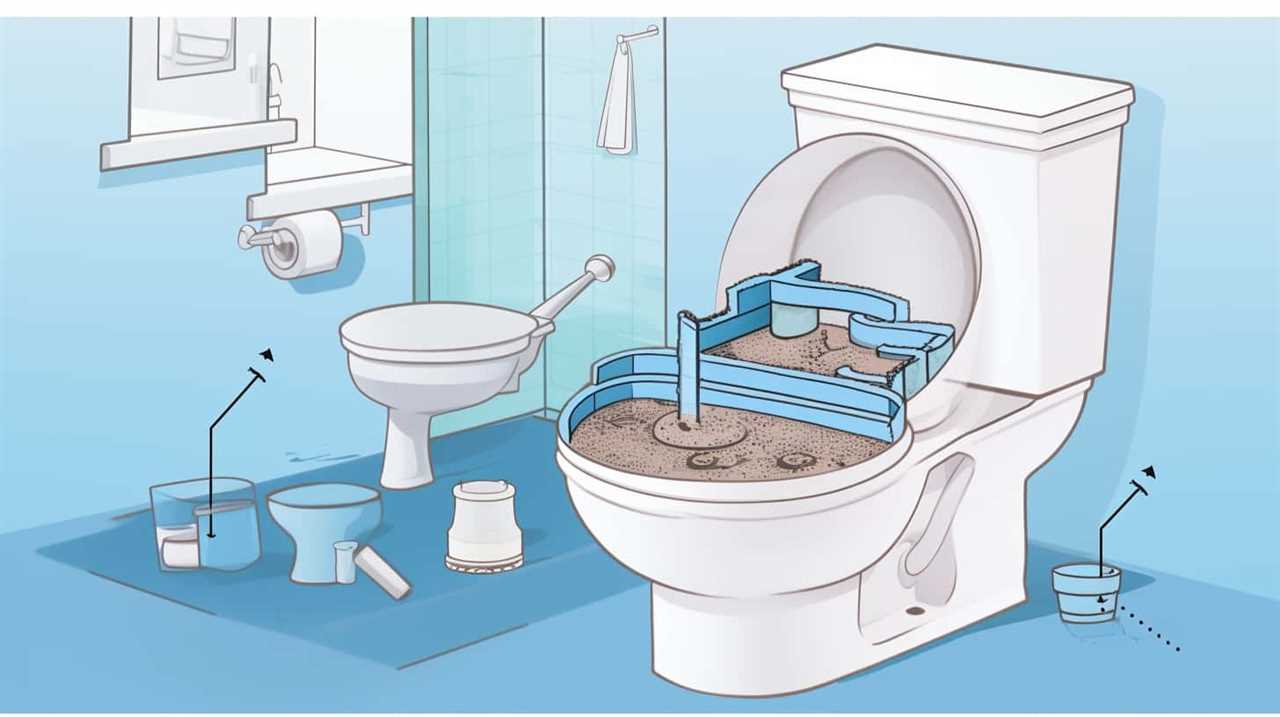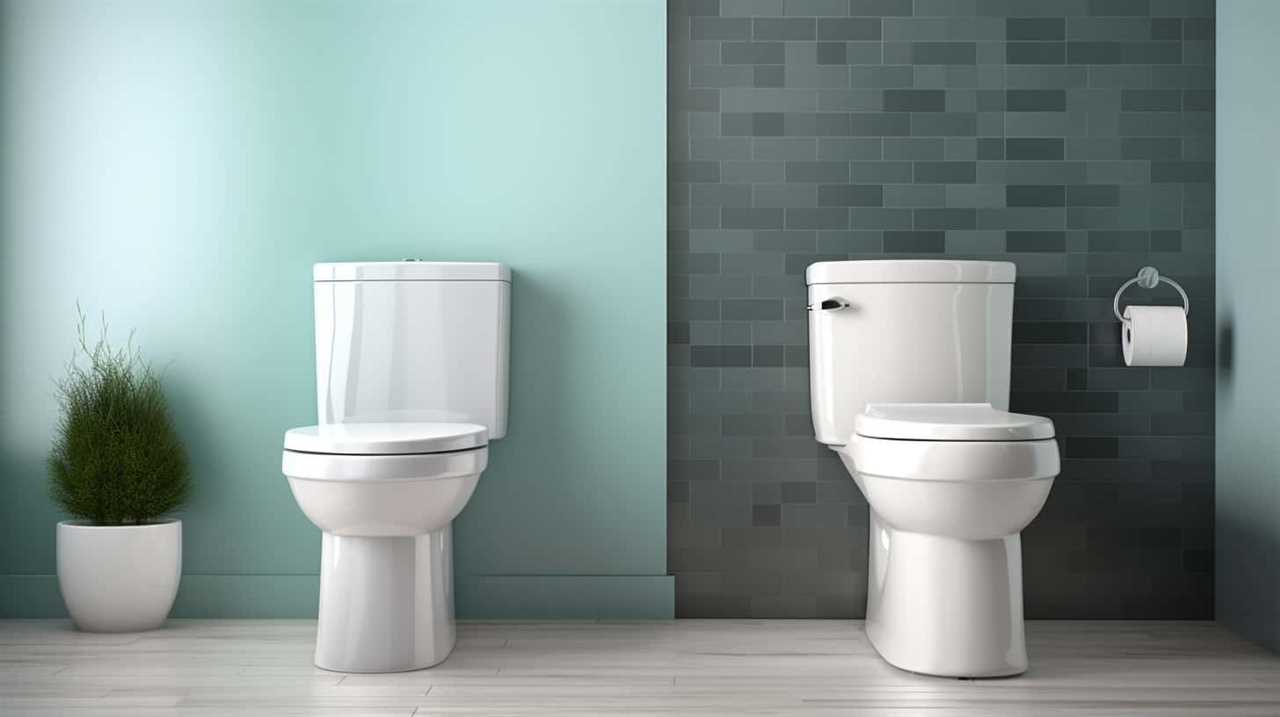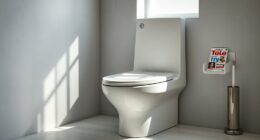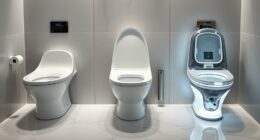Have you ever wondered why the water in your sink suddenly slows to a trickle when you flush the toilet? It’s like a synchronized dance between two competing forces in your plumbing system.
We are here to shed light on this mysterious phenomenon. In this article, we will explore the intricate workings of your plumbing system and uncover the potential culprits behind this frustrating issue.
Get ready to dive deep into the world of water pressure fluctuations and the intricate interplay of pipes and fixtures.
Key Takeaways
- Valve malfunction and faulty water pressure regulator can cause decreased water flow and pressure when flushing the toilet.
- Inconsistent water pressure and fluctuations during the toilet tank refill process can also result in reduced water flow.
- Insufficient water supply, either due to a malfunctioning water meter or municipal water supply issues, can lead to slower water flow during flushing.
- Clogged or partially blocked pipes, caused by debris accumulation or mineral deposits, can impede water flow and result in slower flushing.
Plumbing System Interference
When we flush the toilet, the water in our plumbing system can experience interference, which can lead to a decrease in water flow in other areas of the house. One possible cause of this interference is a valve malfunction.

Valves are essential components of the plumbing system that regulate water flow. If a valve malfunctions, it can restrict the flow of water, causing a decrease in pressure and subsequently slowing down the water in other areas of the house.
Another potential cause of interference is a faulty water pressure regulator. The water pressure regulator is responsible for maintaining a constant and appropriate water pressure throughout the plumbing system. If the regulator isn’t functioning correctly, it can lead to an imbalance in water pressure, resulting in decreased water flow when the toilet is flushed.
It’s important to address these issues promptly to ensure efficient water flow throughout the house.
Water Pressure Fluctuations
Water pressure fluctuations can cause a decrease in water flow when a toilet is flushed. Understanding how water pressure regulation affects the refill of the toilet tank is crucial in addressing this issue.

- Water pressure regulation:
- The water pressure in the plumbing system is maintained by a pressure regulator valve, which controls the flow of water into the pipes.
- If the pressure regulator valve isn’t functioning properly, it can lead to inconsistent water pressure, resulting in reduced flow when the toilet is flushed.
- Toilet tank refill:
- When a toilet is flushed, water from the tank rushes into the bowl to remove waste.
- Once the flush is complete, the tank needs to refill with water.
- If there are water pressure fluctuations during this refill process, it can slow down or interrupt the flow of water, causing the decreased water flow experienced when flushing the toilet.
Insufficient Water Supply
Our water flow can decrease when there isn’t enough water available to supply the toilet flush. This can happen due to various reasons such as a water meter malfunction or municipal water supply issues.
When the water meter malfunctions, it may not accurately measure the amount of water being supplied to our homes. This can result in insufficient water reaching the toilet when we flush, causing a decrease in water flow.
Municipal water supply issues, on the other hand, can occur due to problems in the local water distribution system. This can include pipe leaks, maintenance work, or high demand causing low pressure and inadequate water supply. In either case, the inadequate water supply can lead to slower water flow when we flush the toilet.
The insufficient water supply can also be a sign of clogged or partially blocked pipes, which will be discussed in the next section.
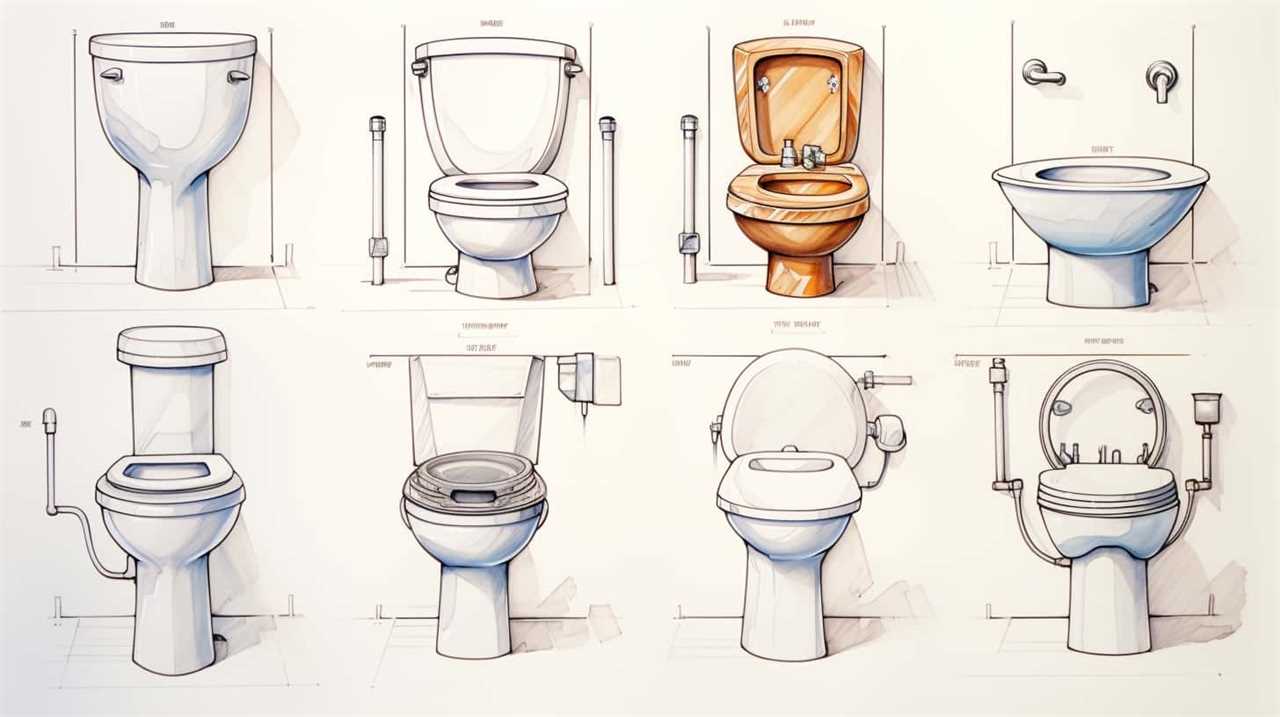
Clogged or Partially Blocked Pipes
Insufficient water supply can also be caused by clogged or partially blocked pipes, leading to a decrease in water flow when we flush the toilet. When pipes become obstructed, the flushing mechanism may not be able to push water through as efficiently as it should. This can result in reduced water pressure and slower water flow.
To understand how pipe obstruction affects water flow during flushing, consider the following:
- Pipe blockages: Accumulated debris, such as hair, soap scum, or mineral deposits, can obstruct the pipes and restrict water flow.
- Partial blockages: Sometimes, pipes may not be completely blocked but can have partial obstructions. These partial blockages still impede water flow, leading to slower flushing.
In such instances, it’s advisable to address the underlying pipe obstruction to restore proper water flow and prevent further issues with the flushing mechanism.
Aging or Faulty Plumbing Fixtures
One possible cause of reduced water flow when flushing the toilet is aging or faulty plumbing fixtures. Over time, plumbing fixtures can deteriorate due to wear and tear, causing a decrease in water pressure. Additionally, faulty fixtures may have internal blockages or malfunctions that restrict the flow of water.
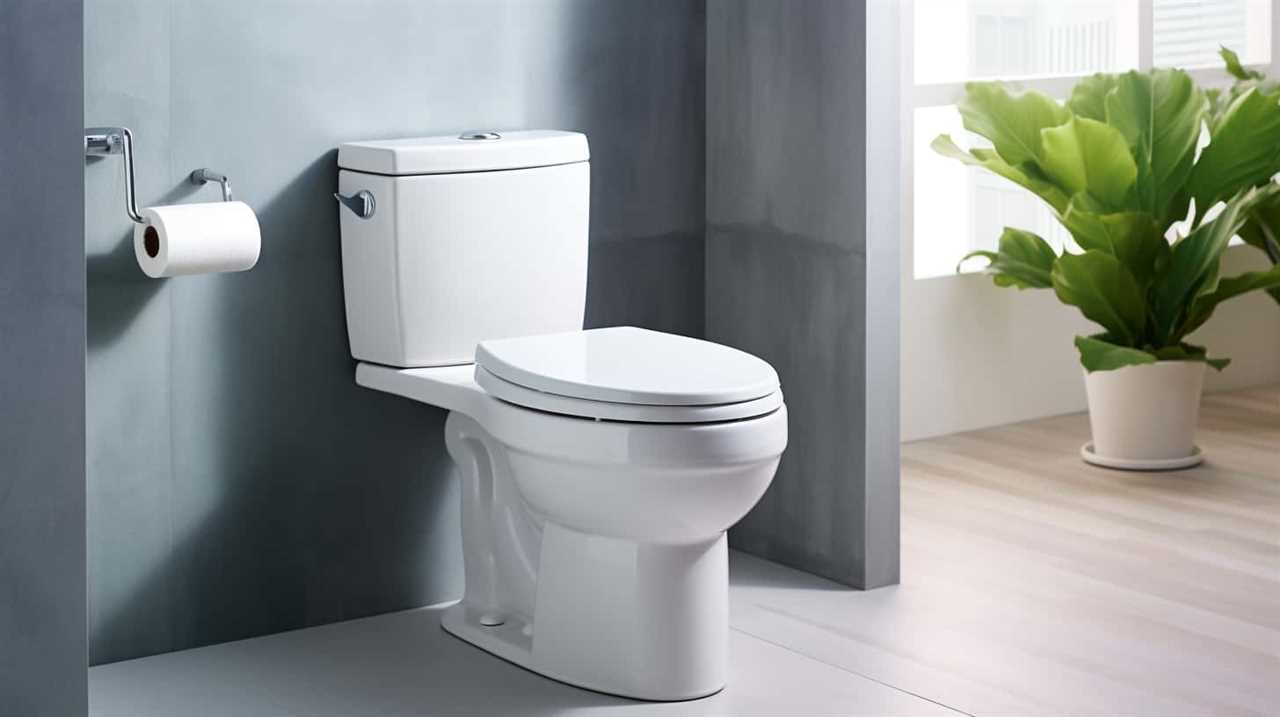
To prevent these issues, regular plumbing fixture maintenance is crucial. This includes inspecting fixtures for any signs of damage or leaks, and repairing or replacing them as necessary.
Furthermore, the impact of hard water on plumbing fixtures shouldn’t be overlooked. Hard water contains high levels of minerals that can build up and clog fixtures over time, further reducing water flow. To mitigate the effects of hard water, using water softeners or installing water treatment systems can be beneficial.
Frequently Asked Questions
How Can I Prevent Plumbing System Interference When Flushing the Toilet?
To prevent plumbing system interference when flushing the toilet, troubleshoot plumbing issues like clogged pipes or blocked vents. Regularly maintain your plumbing system by cleaning drains and addressing any leaks or malfunctions promptly.
What Are the Common Causes of Water Pressure Fluctuations in a House?
Water pressure fluctuations in a house can be caused by various factors, such as clogged pipes, faulty pressure regulators, or even water leaks. Identifying and addressing these issues promptly is crucial for maintaining a steady and efficient water supply throughout the house.
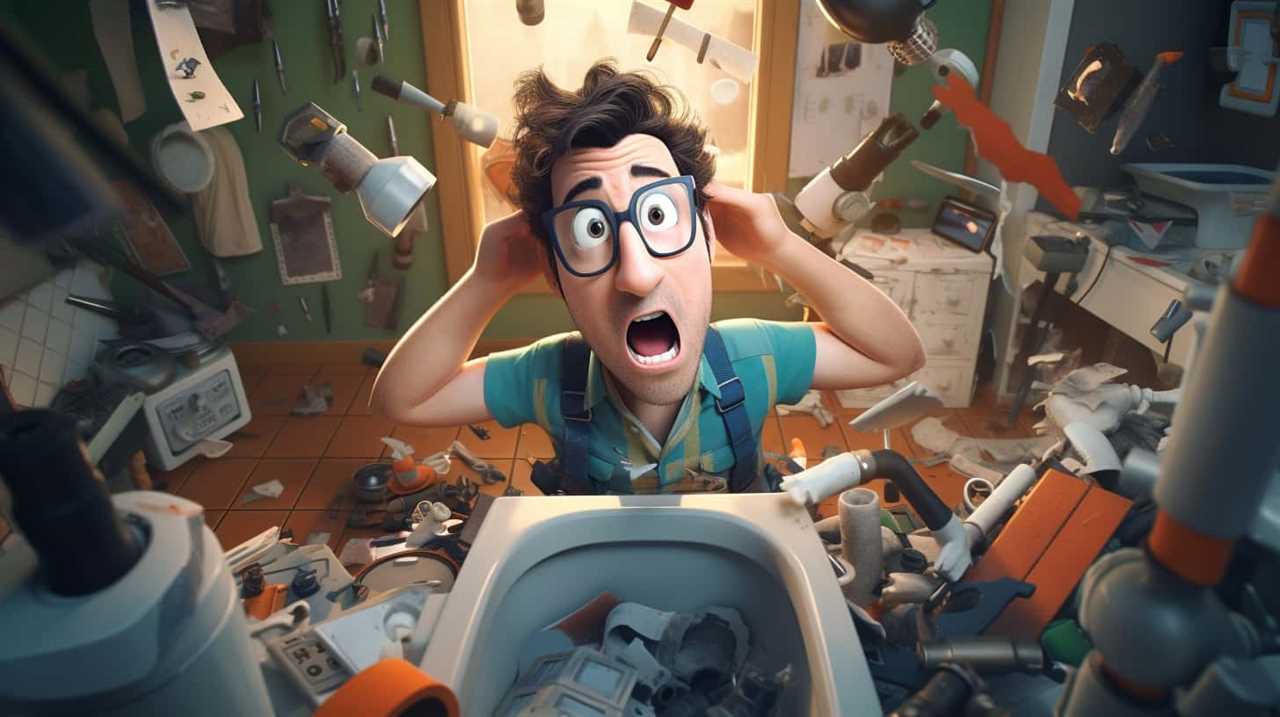
How Can I Increase the Water Supply to Prevent Slow Down When Flushing the Toilet?
To increase water pressure and optimize water flow, you can try adjusting the pressure regulator valve, checking for any leaks or blockages in the pipes, and ensuring that all fixtures and appliances are properly connected and functioning.
How Do I Identify if My Pipes Are Clogged or Partially Blocked?
To identify clogged pipes and troubleshoot plumbing issues, we can perform a few steps. Firstly, check for slow drain in multiple fixtures. Secondly, inspect for gurgling sounds or foul odors. Lastly, hire a professional plumber for a thorough inspection.
What Are the Signs of Aging or Faulty Plumbing Fixtures That May Cause Slow Water Flow When Flushing the Toilet?
When aging or faulty plumbing fixtures are present, slow water flow when flushing the toilet can occur. This may be due to decreased water pressure, clogged pipes, or a malfunctioning valve.
Conclusion
In conclusion, when the toilet is flushed, it can cause the water in other fixtures, such as faucets or showers, to slow down due to plumbing system interference. This is because the water pressure fluctuates, and if there’s insufficient water supply or clogged pipes, it can further impact the water flow.
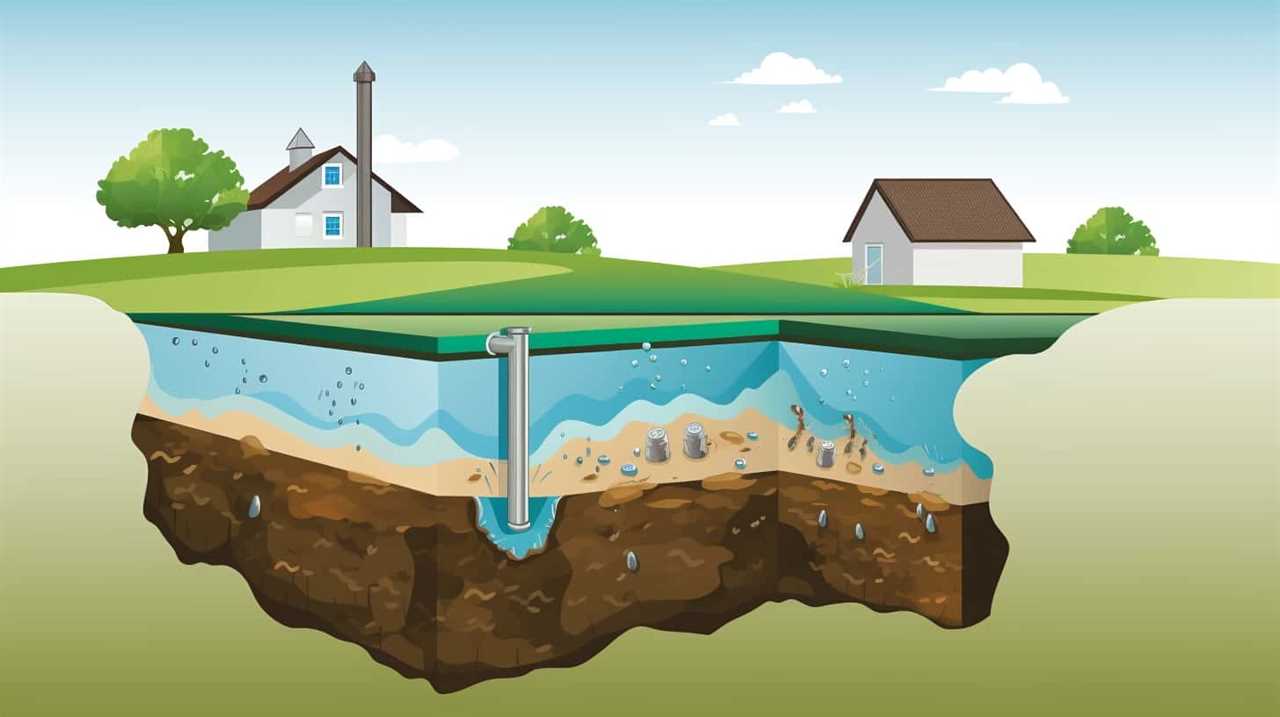
Interestingly, studies have shown that approximately 30% of water pressure issues in households are caused by aging or faulty plumbing fixtures.

